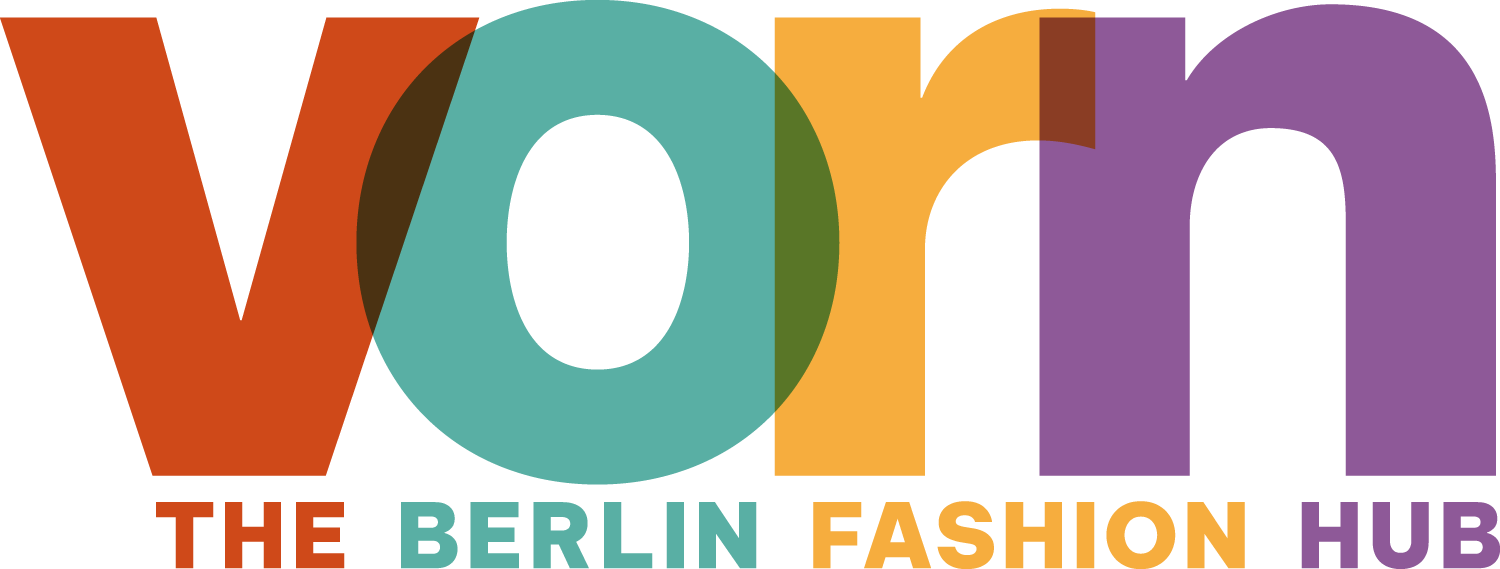RESOURCE POOL
AMD X VORN ACADEMY
MASTER PROGRAM SUSTAINABILITY IN FASHION AND CREATIVE INDUSTRIES (SCI) | RESPONSIBLE PRODUCT DEVELOPMENT MODULE | SUMMER TERM 2023
LECTURER: Prof. Friederike von Wedel-Parlow
COOPERATION PARTNERS: Magdalena Schaffrin, Co-CEO AT VORN - The Berlin Fashion Hub, Jana Beck, Project Manager Students at VORN - The Berlin Fashion Hub
MA STUDENTS:
Rosario Artigas, Alpha Barratt, Iris Blackwood, Luca Bretthauer, Jeonghyun Byun, Ran Du, Carolyn Edmondson, Renee Graff, Noelle Hauer, Poojitha Hedge, Patricia Henke, Alex Hudich, Yonah Huttenbach, Kristi Koumati, Julia Madzarevic, Giselle McNamara, Ava Pajohan, Rutuja Patil, Lili Petkovics, Cheng Phukan, Jenny Richter, Mathilda Schröder, Sabrina Smith, Marina Stefanidou, Sneha Suman, Raphaelle Vavasseur, Esther Werring, Marjory Wilson
DESIGN DRIVEN INNOVATION KNOWLEDGE PLATFORM
ABOUT THE COLLABORATION
80% of the environmental impact is decided in the design phase. The goal of this knowledge platform is to help designers ease responsible design processes at various sustainability angles: Design to Delinearize, to Decarbonize, to Detoxify, to Decolonize and Diversify, and Design to Dematerialize. The platform allows designers to access resources, tools, and perspectives in order to do informed design decisions and to integrate sustainability into their processes.
AMD students developed the knowledge base for responsibe product development by analyzing the opportunities, challenges, and solutions of sustainable design practices to make design a first driver for sustainable transformation. By exploring responsible design processes, strategies, and practices, they developed themselves as experts in their respective fields of action. Using their research and analysis of existing knowledge platforms, they applied their self-defined design processes and developed a platform tailored to the disruptive vision of VORN Academy and its target audience of international designers.
tOPICS OVERVIEW
DESIGN TO DELINEARIZE
This report looks at context & history, key definitions & terminologies, business models, circular design strategies and approaches, technologies & best practices. The systems and processes associated with 'design to delinearise' have been put in place to combat these issues and provide designers with viable, proven solutions to the linear model - while still allowing for creativity-led and high quality design processes. By educating designers in circular design processes, they can make more informed choices as to materials, production processes and even the structure of their business model, resulting in lowered greenhouse gas emissions and a more efficient use of natural resources during the design phase.
DESIGN TO DECARBONIZE
This report looks at potential best practices, critical perspectives, design approaches, and terminology significant to the important discussion of decarbonisation in the fashion and apparel industry. By providing resources and examples, our hope is to aid designers in their attempt to positively impact their design decisions. Globally, the words in every sustainability report are in regards to carbon and carbon emissions. One of the most recognizable data metrics, CO2 and Greenhouse Gas (GHG) emissions are used as targets for not only reducing global warming but also a first sustainability initiative for large companies.
DESIGN TO DETOXIFY
This guide aims to provide designers with a comprehensive framework to detoxifying fashion production. It addresses key aspects such as terminology, data, facts, technologies, design processes, best practices, certifications, and a chemical guide. By equipping designers with this knowledge, the guide empowers them to create fashion products that are environmentally friendly and free from harmful chemicals.
DESIGN TO DECOLONIZE AND DIVERSIFY
This guide is to inspire a sustainable transformation for designers to decolonise and diversify their design process. Studying and analysing existing practices as inspirational tools to empower marginalised backgrounds.
DESIGN TO DEMATERIALIZE
This guide focuses on the overall topic of "Design to Dematerialize" with a special emphasis on digital design. Within this module, the entire design process is addressed and each individual step is explained in detail. The focus is to highlight the sustainable advantages of digital design methodology while comparing it to a regular one. This guide also aims to equip designers with new tools and design softwares across various steps of the design process. Additionally, new terminologies have been explained along with advantages and disadvantages of desiging to dematerialize.





